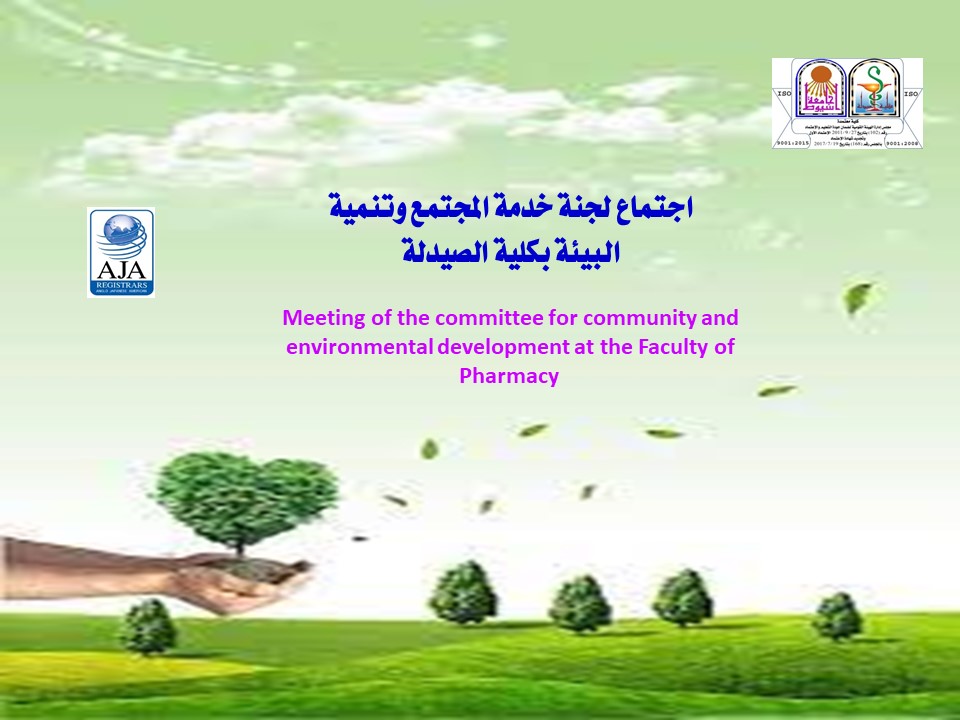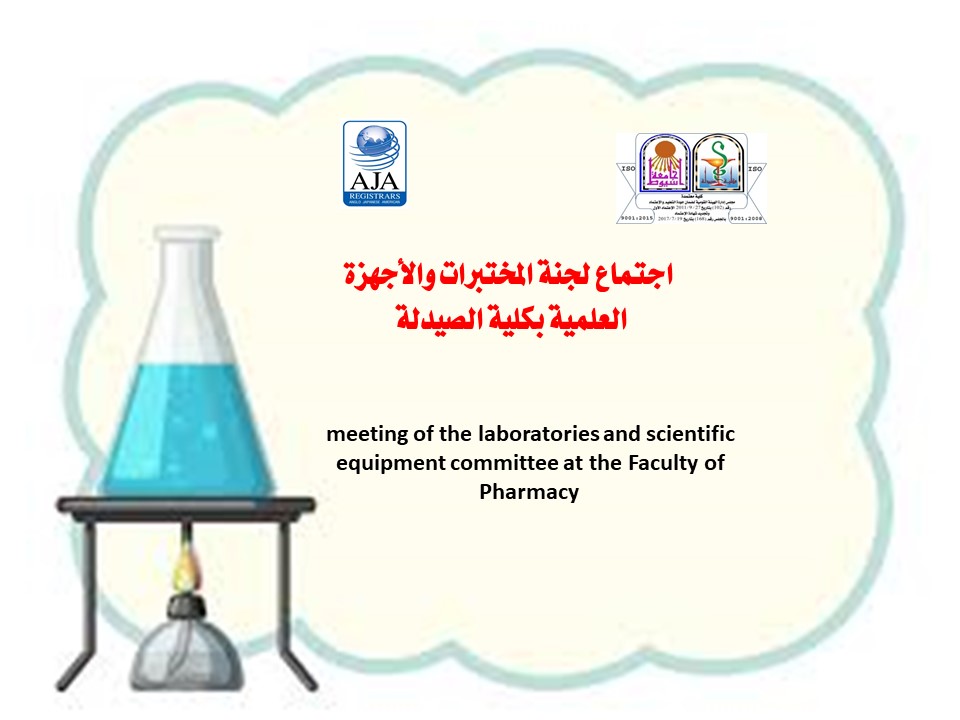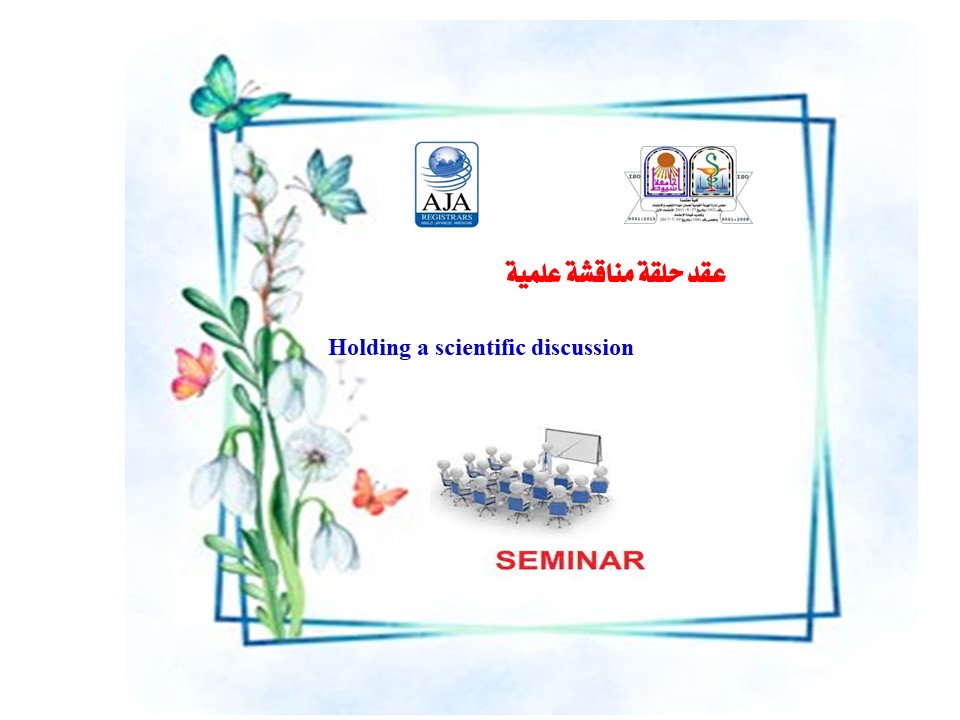God willing, A meeting of the committee for community and environmental development will hold on Sunday, September 11, 2022 at 10:00 (AM)
in the office of Vice Dean for Community Services and Environmental Development Affairs.

 Do you have any questions? (088) 2080369 - 2345622 Pharmacy_QAAU@pharm.aun.edu.eg
Do you have any questions? (088) 2080369 - 2345622 Pharmacy_QAAU@pharm.aun.edu.eg
Purpose: To develop an externally triggered rapid-release targeted system for treating ovarian cancer, gemcitabine (GMC) was entrapped into sonosensitive (SoS) folate (Fo)- modified liposomes (LPs). Methods: GMC-loaded LPs (GMC LPs), GMC-loaded Fo-targeted LPs (GMC-Fo LPs), and GMC-loaded Fo-targeted SoS LPs (GMC-SoS Fo LPs) were prepared utilizing a filmhydration technique and evaluated based on particle size, ζ-potential, and percentage entrapped drug. Cellular uptake of the fluorescent delivery systems in Fo-expressing ovarian cancer cells was quantified using flow cytometry. Finally, tumor-targeting ability, in vivo evaluation, and pharmacokinetic studies were performed. Results: GMC LPs, GMC-Fo LPs, and GMC-SoS Fo LPs were successfully prepared, with sizes of 0.05). Biodistribution study showed that of GMC concentration in tumors treated with GMC-SoS-Fo LPs (with ultrasound) improved 2.89-fold that of free GMC (p<0.05). In vivo, GMC-SoS Fo LPs showed the highest antiproliferative and antitumor action on ovarian cancer. Conclusion: These findings showed that externally triggered rapid-release SoS Fo-modified LPs are a promising system for delivering rapid-release drugs into tumors. Keywords: sonosensitive liposome, gemcitabine, folate-modified liposomes, externally triggered, ovarian cance
Abstract: Intravenous dexmedetomidine (DEX) is currently approved by the FDA for the sedation of intubated patients in intensive care units to reduce anxiety and to augment postoperative analgesia. Bradycardia and hypotension are limitations associated with the intravenous administration of DEX. In this study, DEX sublingual in situ gels were developed and assessed for their pH, gelling capacity, viscosity, mucoadhesion and in vitro drug release. The optimized gelling system demonstrated enhanced mucoadhesion, superior gelling capacity, reasonable pH and optimal rheological profile. In vivo, compared to the oral solution, the optimal sublingual gel resulted in a significant higher rate and extent of bioavailability. Although the in situ gel had comparable plasma levels to those observed following intravenous administration, significant amelioration of the systemic adverse reactions were attained. As demonstrated by the hot plate method, a sustained duration of analgesia in rats was observed after sublingual administration of DEX gel compared to the intravenously administered DEX solution. Furthermore, no changes in systolic blood pressure and heart rate were recorded in rats and rabbits, respectively, after sublingual administration of DEX. Sublingual administration of DEX in situ gel provides a promising approach for analgesia and sedation, while circumventing the reported adverse reactions associated with intravenous administration of DEX.
Loading small molecular weight hydrophilic drugs into polymeric carriers is a challenging task. Metformin hydrochloride (MET) is a highly soluble oral antidiabetic drug of small size and high cationic charge. Hydrophobic ion pairing (HIP) is an approach for reversible modulation of solubility and hydrophilicity of water-soluble drugs via complexation with oppositely charged molecules. Herein, we prepared MET ion pairs and carefully studied and characterized MET interaction with diferent ligands, with the aim of increasing MET lipophilicity and loading efciency. HIP was successful using three hydrophilic anionic ligands; sodium dodecyl sulphate (SDS) Carbopol (CB) and tannic acid (TA). Electrostatic interaction and hydrogen bonding drove the complexation per spectroscopic and thermal studies. Complexation efciency depended on ligand type and charge ratio. While complexes had varying interaction strengths, the excessive stability of TA/MET resulted in unfavorable poor MET dissociation. Notably, HIP imparted a 450 and tenfold lipophilicity increase for SDS/MET and CB/ MET, respectively. The latter showed favorable controlled, yet complete release of MET at pH 6.8 and was loaded into alginate beads. Complex bulkiness and decreased lipophilicity resulted in a dramatic 88% increase of MET loading, demonstrating the success of HIP as a simple, efcient and applicable approach for modulating drug’s properties.
Abstract: Breast cancer is the most widespread cancer in women with rising incidence, prevalence, and mortality in developed regions. Most breast cancers (80%) are estrogen receptor–positive, indicating that disease progression could be controlled by estrogen inhibition in the breast tissue. However, drug resistance limits the benefits of this approach. Combinatorial treatment could overcome the resistance and improve the outcome of breast cancer treatment. In the current study, we prepared letrozole-(LTZSPs) and quercetin-loaded spanlastics (QuSPs) using different edge activators—Tween 80, Brij 35, and Cremophor RH40—with different concentrations. The spanlastics were evaluated for their average particles size, surface charge, and percent encapsulation efficiency. The optimized formulations were further examined using transmission electron microscopy, Fourier transform infrared spectroscopy, in vitro drug release and ex vivo skin permeation studies. The prepared spherical LTZSPs and QuSPs had average particle sizes ranged between 129–310 nm and 240–560 nm, respectively, with negative surface charge and high LTZ and Qu encapsulation (94.3–97.2% and 97.9–99.6%, respectively). The in vitro release study of LTZ and Qu from the selected formulations showed a sustained drug release for 24 h with reasonable flux and permeation through the rat skin. Further, we evaluated the in vitro cytotoxicity, cell cycle analysis, and intracellular reactive oxygen species (ROS) of the combination therapy of letrozole and quercetin either in soluble form or loaded in spanlastics against MCF-7 breast cancer cells. The LTZSPs and QuSPs combination was superior to the individual treatments and the soluble free drugs in terms of in vitro cytotoxicity, cell cycle analysis, and ROS studies. These results confirm the potential of LTZSPs and QuSPs combination for transdermal delivery of drugs for enhanced breast cancer management.

God willing, A meeting of the committee for community and environmental development will hold on Sunday, September 11, 2022 at 10:00 (AM)
in the office of Vice Dean for Community Services and Environmental Development Affairs.

God willing, the laboratories and scientific equipment committee will hold its meeting on Sunday, September 11, 2022 AD at eleven (AM)

“Pharmacognostical study of Calamus rotang L.Family Arecaceae Cultivated in Egypt"
And that will be on Thursday, September 8, 2022 in the meeting room of the Pharmacognosy Department at exactly ten o'clock in the morning

